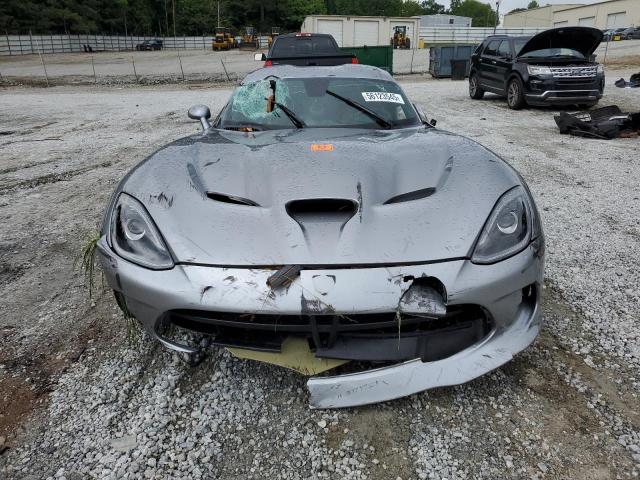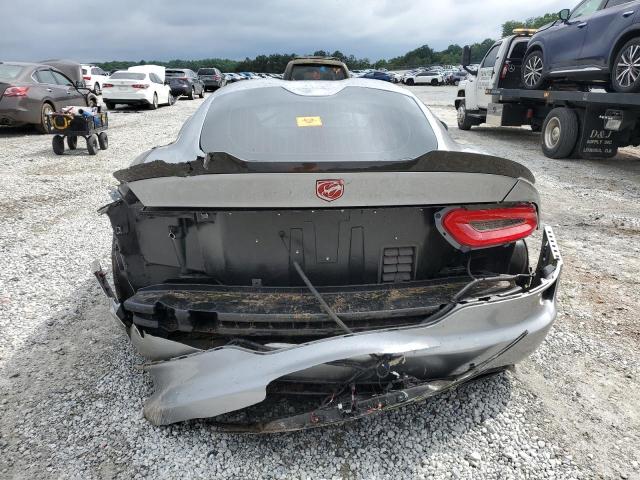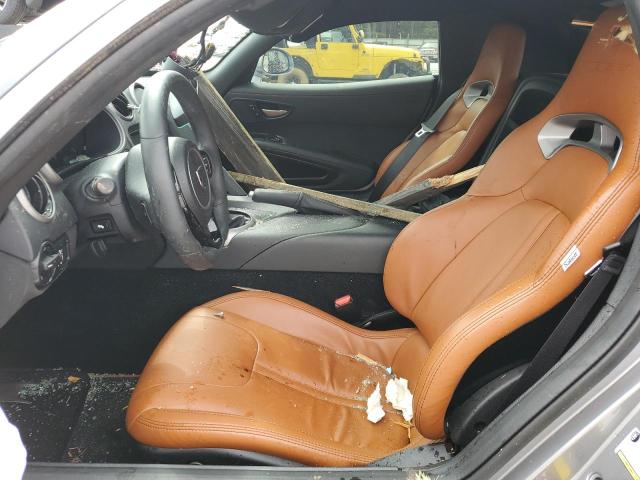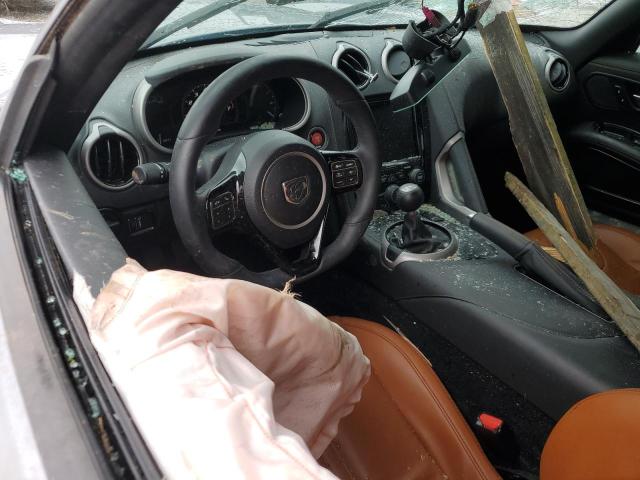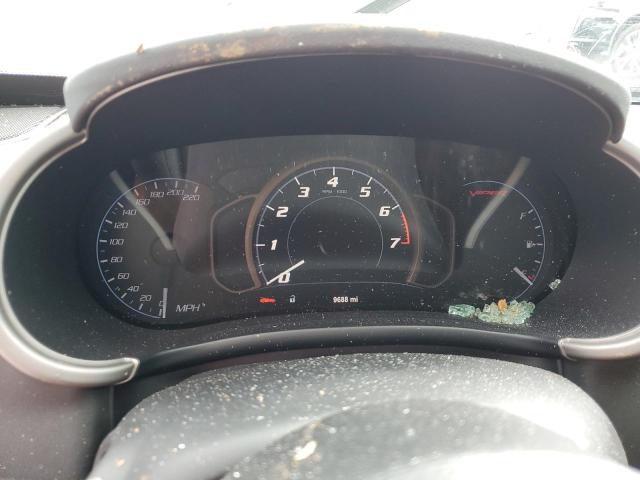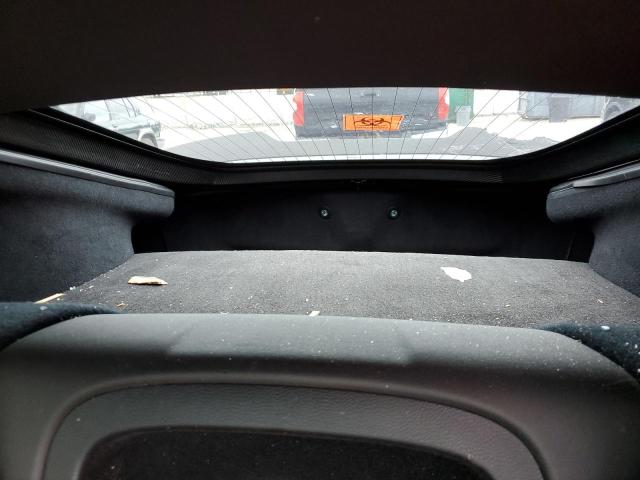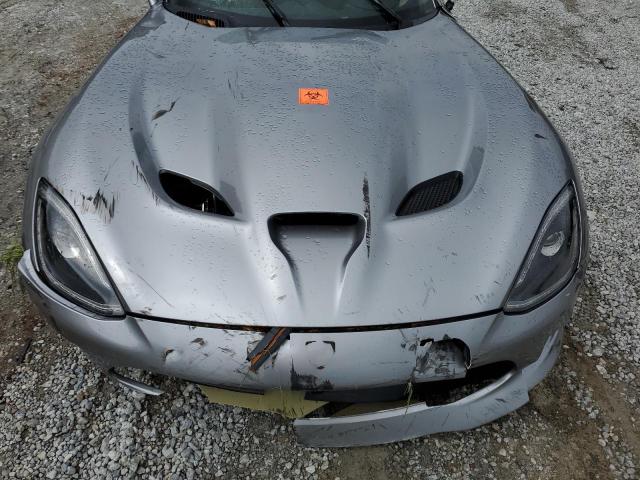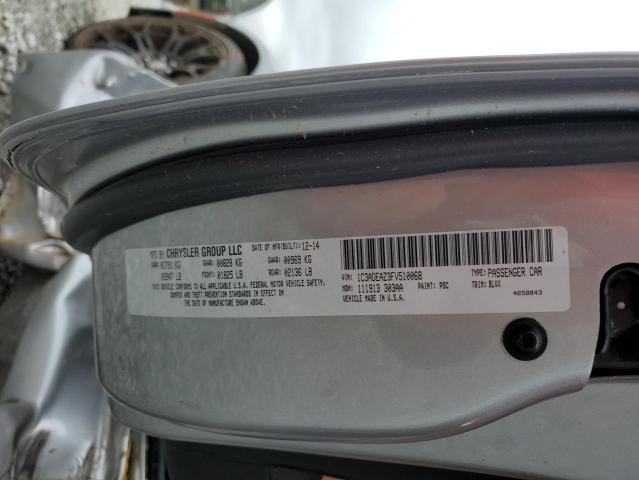2015 DODGE VIPER | 1C3ADEAZ3FV510068
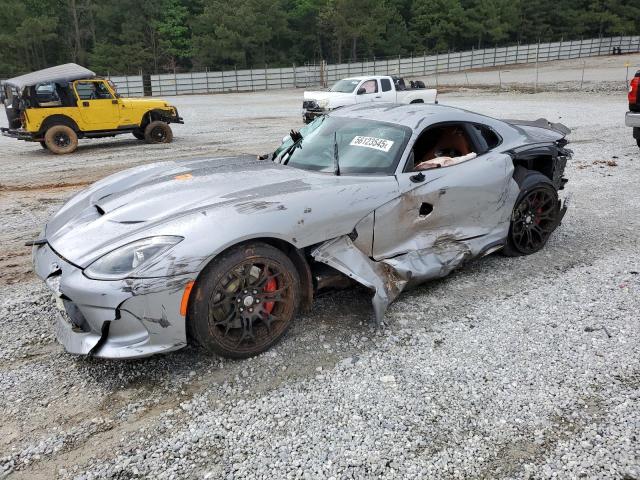 ❯
❯Lot Details
- Sale Date11/Jun/2025
- Lot Number56123545
- Location
- Odometer9,688 miles (15,591 km)
- Primary Damage:ALL OVER
- Fuel
- Engine Type8.4L 10
- Transmission
- Drive Type
- Color
Final Bid Dodge Viper (2015)
$44,250
$64,583
$81,000
Vehicle specifications
3
~$125,000
Engine: 8.4L naturally aspirated V10
Torque: 814 Nm
0–100 km/h: ~3.3 s
The 2013–2017 Dodge Viper was a raw, unapologetic performance machine that remained true to its hand-built, analog heritage while incorporating modern engineering. Powered by an enormous 8.4-liter naturally aspirated V10 engine producing 645 horsepower and 814 Nm of torque, the Viper delivered ferocious acceleration. The top-tier ACR (American Club Racer) variant achieved 0–100 km/h in just 3.3 seconds and held multiple production car lap records at tracks like Laguna Seca and the Nürburgring.
What made the Viper truly special wasn’t just brute force—it was the tactile, visceral driving experience. It used a 6-speed Tremec manual transmission exclusively, had no dual-clutch alternatives, and featured limited electronic intervention. The ACR took this formula to the extreme, with carbon-ceramic brakes, adjustable Bilstein racing shocks, and a massive aero package generating over 1,500 pounds of downforce at speed. The result was a car that demanded commitment but rewarded skill with unmatched grip, mechanical feel, and blistering cornering performance.
The final-gen Viper was a driver’s car in the purest sense. It required finesse, courage, and respect. It didn’t aim to pamper—it aimed to dominate. In a world of ever-softening supercars, the Viper stood as the last American street-legal racecar, engineered to thrill rather than coddle.
Body Styles
The Dodge Viper (VX I generation) was offered exclusively as a two-door, two-seat coupe. Its body featured a front-engine, rear-wheel-drive layout with a long hood, cab-rearward cockpit, and signature double-bubble roof designed to accommodate helmets on track. Deep hood vents, wide rear haunches, side-mounted exhausts, and a sloping tail gave the car its signature aggressive silhouette. The ACR added an enormous carbon-fiber rear wing, splitter, dive planes, and diffuser, transforming the Viper into one of the most aerodynamic and track-capable production cars ever made. With its low stance, exaggerated fender flares, and unmistakable proportions, the Viper looked every bit as brutal as it drove.
Model Name Meaning (Manufacturer)
“Viper” was chosen to evoke danger, speed, and lethality—qualities the car embraced both in design and performance. Originally conceived as a spiritual successor to the Shelby Cobra, the name "Viper" aligns with the American muscle ethos while emphasizing a more venomous, exotic character. Unlike many performance cars named with alphanumerics, “Viper” is a true identity.
Model Name Meaning (Languages)
“Viper” is a universally understood word derived from Latin vipera, referring to venomous snakes. Its phonetic sharpness and biological reference underscore the car’s wild, unpredictable nature. Across cultures and languages, the term conveys aggression, precision, and lethal intent—making it perfectly aligned with the Viper’s design philosophy.
Body & Interior Colors and Rims
The Viper offered a wide spectrum of bold exterior colors, including Adrenaline Red, Competition Blue, Gunmetal Pearl, Stryker Green, and GTS-R Blue. Special editions featured heritage paint schemes like the white-with-blue-stripes GTS, TA Orange (Time Attack), and red/black ACR Extreme. The final model year offered a highly customizable “1 of 1” program, allowing buyers to choose from over 25 million combinations of colors, stripes, wheels, badges, and interiors—making each Viper virtually unique.
Inside, the cockpit was redesigned in 2013 to feature higher-quality materials including Laguna leather, Alcantara, exposed carbon fiber, and billet aluminum. Interior color themes included black-on-black, red/black, sepia brown, and white/black, depending on trim. The Viper’s cabin remained purpose-built, with deeply bolstered seats, a digital/analog hybrid gauge cluster, and a Uconnect infotainment screen—functional, but never the focus. ACR and TA variants included track-ready seat materials, minimal sound insulation, and delete options for weight savings.
Wheel designs included 5- and 10-spoke forged aluminum options in polished, black, matte graphite, or red-accented finishes. Sizes ranged from 18-inch fronts to 19-inch rears, and track-focused trims used ultra-lightweight alloys wrapped in Kumho Ecsta V720 or Pirelli P Zero Trofeo R tires.
Top Expensive Options
- ACR Extreme Aero Package (wing, splitter, dive planes): $6,900
- 1 of 1 Custom Paint + Interior Program: $6,000+
- Carbon Ceramic Brake System (ACR): $5,000
- Track Package with Lightweight Wheels and 5-Point Harness Prep: $4,800
- Laguna Premium Leather Interior Trim: $4,500
- Custom Dual Racing Stripe Package: $5,000
- Harman Kardon 18-Speaker Audio Upgrade: $2,000
- Carbon Interior Appearance Group: $2,500
- Exterior Carbon-Fiber Hood and Roof: $9,000
- TA (Time Attack) Package with Suspension and Aero Upgrades: $6,700
vs Competitors
The Dodge Viper competed with the Chevrolet Corvette Z06/ZR1, Porsche 911 GT3 RS, and Nissan GT-R. Against the Corvette, the Viper offered more displacement and analog driving purity, though it lacked magnetic ride and daily usability. Compared to the GT3 RS, the Viper was heavier and less refined, but matched its lap time potential and added rawness. The GT-R had better traction and tech, but less feedback. The Viper was never about polish—it was about passion, danger, and engagement. While it lagged in infotainment and comfort, no rival offered such a visceral, manual-only, rear-drive supercar experience in its price range.
Fun Fact
The 2016–2017 Viper ACR held lap records at over a dozen U.S. tracks, including Laguna Seca, VIR, and Road Atlanta—making it one of the most track-capable production cars ever built. Its Nürburgring lap time was never officially published due to safety policies, but independent attempts clocked the ACR at sub-7:01 times, rivaling hypercars. The Viper was also the only supercar built entirely in Detroit, hand-assembled at the Connor Avenue Assembly Plant—where production ended in 2017 with just over 30,000 total units built across all generations.
Vehicle specifications
3
~$125,000
Torque:
0–100 km/h:
The 2013–2017 Dodge Viper was a raw, unapologetic performance machine that remained true to its hand-built, analog heritage while incorporating modern engineering. Powered by an enormous 8.4-liter naturally aspirated V10 engine producing 645 horsepower and 814 Nm of torque, the Viper delivered ferocious acceleration. The top-tier ACR (American Club Racer) variant achieved 0–100 km/h in just 3.3 seconds and held multiple production car lap records at tracks like Laguna Seca and the Nürburgring.
What made the Viper truly special wasn’t just brute force—it was the tactile, visceral driving experience. It used a 6-speed Tremec manual transmission exclusively, had no dual-clutch alternatives, and featured limited electronic intervention. The ACR took this formula to the extreme, with carbon-ceramic brakes, adjustable Bilstein racing shocks, and a massive aero package generating over 1,500 pounds of downforce at speed. The result was a car that demanded commitment but rewarded skill with unmatched grip, mechanical feel, and blistering cornering performance.
The final-gen Viper was a driver’s car in the purest sense. It required finesse, courage, and respect. It didn’t aim to pamper—it aimed to dominate. In a world of ever-softening supercars, the Viper stood as the last American street-legal racecar, engineered to thrill rather than coddle.
Body Styles
The Dodge Viper (VX I generation) was offered exclusively as a two-door, two-seat coupe. Its body featured a front-engine, rear-wheel-drive layout with a long hood, cab-rearward cockpit, and signature double-bubble roof designed to accommodate helmets on track. Deep hood vents, wide rear haunches, side-mounted exhausts, and a sloping tail gave the car its signature aggressive silhouette. The ACR added an enormous carbon-fiber rear wing, splitter, dive planes, and diffuser, transforming the Viper into one of the most aerodynamic and track-capable production cars ever made. With its low stance, exaggerated fender flares, and unmistakable proportions, the Viper looked every bit as brutal as it drove.
Model Name Meaning (Manufacturer)
“Viper” was chosen to evoke danger, speed, and lethality—qualities the car embraced both in design and performance. Originally conceived as a spiritual successor to the Shelby Cobra, the name "Viper" aligns with the American muscle ethos while emphasizing a more venomous, exotic character. Unlike many performance cars named with alphanumerics, “Viper” is a true identity.
Model Name Meaning (Languages)
“Viper” is a universally understood word derived from Latin vipera, referring to venomous snakes. Its phonetic sharpness and biological reference underscore the car’s wild, unpredictable nature. Across cultures and languages, the term conveys aggression, precision, and lethal intent—making it perfectly aligned with the Viper’s design philosophy.
Body & Interior Colors and Rims
The Viper offered a wide spectrum of bold exterior colors, including Adrenaline Red, Competition Blue, Gunmetal Pearl, Stryker Green, and GTS-R Blue. Special editions featured heritage paint schemes like the white-with-blue-stripes GTS, TA Orange (Time Attack), and red/black ACR Extreme. The final model year offered a highly customizable “1 of 1” program, allowing buyers to choose from over 25 million combinations of colors, stripes, wheels, badges, and interiors—making each Viper virtually unique.
Inside, the cockpit was redesigned in 2013 to feature higher-quality materials including Laguna leather, Alcantara, exposed carbon fiber, and billet aluminum. Interior color themes included black-on-black, red/black, sepia brown, and white/black, depending on trim. The Viper’s cabin remained purpose-built, with deeply bolstered seats, a digital/analog hybrid gauge cluster, and a Uconnect infotainment screen—functional, but never the focus. ACR and TA variants included track-ready seat materials, minimal sound insulation, and delete options for weight savings.
Wheel designs included 5- and 10-spoke forged aluminum options in polished, black, matte graphite, or red-accented finishes. Sizes ranged from 18-inch fronts to 19-inch rears, and track-focused trims used ultra-lightweight alloys wrapped in Kumho Ecsta V720 or Pirelli P Zero Trofeo R tires.
Top Expensive Options
- ACR Extreme Aero Package (wing, splitter, dive planes): $6,900
- 1 of 1 Custom Paint + Interior Program: $6,000+
- Carbon Ceramic Brake System (ACR): $5,000
- Track Package with Lightweight Wheels and 5-Point Harness Prep: $4,800
- Laguna Premium Leather Interior Trim: $4,500
- Custom Dual Racing Stripe Package: $5,000
- Harman Kardon 18-Speaker Audio Upgrade: $2,000
- Carbon Interior Appearance Group: $2,500
- Exterior Carbon-Fiber Hood and Roof: $9,000
- TA (Time Attack) Package with Suspension and Aero Upgrades: $6,700
vs Competitors
The Dodge Viper competed with the Chevrolet Corvette Z06/ZR1, Porsche 911 GT3 RS, and Nissan GT-R. Against the Corvette, the Viper offered more displacement and analog driving purity, though it lacked magnetic ride and daily usability. Compared to the GT3 RS, the Viper was heavier and less refined, but matched its lap time potential and added rawness. The GT-R had better traction and tech, but less feedback. The Viper was never about polish—it was about passion, danger, and engagement. While it lagged in infotainment and comfort, no rival offered such a visceral, manual-only, rear-drive supercar experience in its price range.
Fun Fact
The 2016–2017 Viper ACR held lap records at over a dozen U.S. tracks, including Laguna Seca, VIR, and Road Atlanta—making it one of the most track-capable production cars ever built. Its Nürburgring lap time was never officially published due to safety policies, but independent attempts clocked the ACR at sub-7:01 times, rivaling hypercars. The Viper was also the only supercar built entirely in Detroit, hand-assembled at the Connor Avenue Assembly Plant—where production ended in 2017 with just over 30,000 total units built across all generations.





